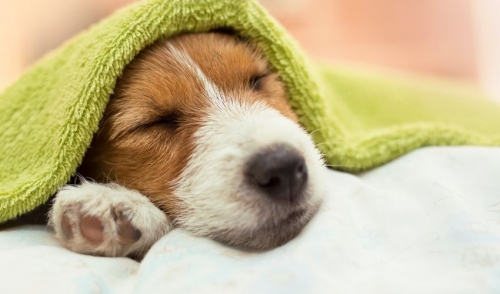Grooming is an important part of keeping your puppy’s skin and coat in top condition, and can be essential for bonding, training, and socialization skills. But can your puppy be too young to be groomed?
The Importance of Grooming
Grooming is more than just brushing your puppy, it also includes baths, nail trimming, ear cleaning, wiping the eyes, trimming sensitive areas, and overall coat trims when necessary. The exact degree of grooming and what is required with each session will depend on the puppy’s breed, its coat condition, and any special considerations, such as sensitive skin, matted fur, or shedding cycles. While grooming can keep your puppy looking its best, proper grooming will also minimize fleas and ticks, improve skin condition, help socialize your puppy, provide a bonding experience, and raise awareness of any problem areas, such as ear infections, eye irritation, sore paws, and similar concerns. Because grooming can be so important, it is essential that you start grooming your puppy at an appropriate age.
Getting Ready for the Groomer
As soon as you have your puppy home, you should take steps to get it ready for professional grooming sessions. Acclimating your pup to body touching – stroking its legs, massaging its ears and paws, gently holding its head – will help the puppy recognize that these touches won’t hurt and don’t need to be feared. Brushing your puppy at home and introducing other equipment similar to a groomer’s tools will also help prepare your puppy for grooming appointments. Let your puppy see and hear a blow dryer if possible, and use a metal spoon or file to gently tap your puppy’s toenails so they get used not only to having their paws handled, but to the same type of touch and pressure that will accompany nail trims.
Socializing your puppy around strangers will also help the animal feel more comfortable around a groomer, and you can take steps to get your puppy used to grooming situations by gently and safely picking your puppy up and putting it on a counter or table. This will be similar to an elevated trimming or bathing table, and being used to the sensation will help your puppy stay calm at the groomer’s. Similarly, your puppy should be familiar with car trips and leashes before visiting a groomer, so those experiences will not add to the stress of a first grooming appointment.
Choosing a Groomer
Before scheduling a first grooming appointment, puppy owners should ask their veterinarian, other dog owners, or breeders for groomer recommendations, particularly for groomers familiar with the puppy’s breed and grooming needs. Going to meet the groomer before an appointment can help the puppy (and owner!) feel more comfortable with the service, and individual groomers can offer tips for how to prepare a puppy or what to expect during a grooming appointment. Check references or portfolios for a groomer if possible, and discuss with a groomer the details of the service and what is expected. Many pet owners will also bring photos of their preferred trim or cut styles to a groomer to be clear about the results they hope to achieve for their pet.
The First Grooming Appointment
Most puppies can be ready for their first professional grooming visit – either going to a groomer’s or having a mobile groomer at home – when they are 10-16 weeks old, as soon as they have completed their second round of vaccinations. Dog breeds with more demanding grooming needs may need early grooming appointments, while short-haired puppies with more casual needs could wait until they are slightly older. It is best to start grooming visits early, however, as younger puppies will acclimate to the groomer more easily and are easier to train for comfortable visits.
A first grooming appointment is likely to be an abbreviated visit, involving only a slight nail trim, gentle bath and drying, and coat trimming around the face, ears, and sanitary areas as required. Because young puppies are less accustomed to grooming and have less patience than older dogs, a shorter first appointment is less stressful and helps the puppy learn to be comfortable at the groomer’s.
When leaving a puppy at the groomer’s, avoid a lengthy, dramatic farewell that could overexcite a puppy or cause separation anxiety. Some groomers will permit an owner to stay nearby, particularly for an initial appointment, while others will prefer to call or text when the puppy is ready to be picked up. Owners should feel comfortable with how their puppies are to be handled and groomed, and should work with the groomer to develop a safe, familiar routine for their pets. It may take 2-3 appointments for a puppy to feel completely at ease with the groomer, and sticking to a regular schedule and routine can help both the pet and owner have a positive, comfortable experience.
Keeping Up Good Grooming Habits
Grooming doesn’t end when a puppy’s appointment is over. A good groomer will provide tips for how to keep your puppy looking its best between appointments, and will be happy to answer questions about brushing your puppy, caring for its teeth, or doing other at-home care between grooming sessions. The more you keep your puppy familiar with grooming behaviors and activities, the less stressful and more comfortable each appointment will be for the dog’s entire life, and it will always look and feel its best.






Comments